As we are now engulfed by a digital ecosystem, it’s important that we protect our digital assets from malicious attackers. For that, we need a secure and powerful password manager.
It’s impossible to remember each and every password for a myriad of websites. That’s why we bring you Keeper Password Manager, which is ranked among the best in the business. It offers ironclad security, encryption, and the company has a stringent privacy policy to not share data with third-parties. Keeper Password Manager also offers features like BreachWatch, which alerts you if your credentials are found in a public data breach, and Secure File Storage, which allows you to store photos, videos, and other sensitive files in an encrypted vault. So let’s dive in and learn more about Keeper Password Manager.
Keeper Password Manager Review (2022)
Keeper Password Manager: Pros and Cons
Before we dive in and look at all of Keeper’s features in detail, here is a quick look at the pros and cons. During my brief testing, I found that the software is perfect for anyone who is looking to simplify password management and who values their privacy. The free plan supports only one device, which is limiting, as you won’t be able to access the login credentials on another device.
| Pros | Cons |
|---|---|
| No one can access your passwords; Zero-knowledge encryption, strict privacy policy | The free version has just one mobile device support |
| AES 256-bit Encryption, processed locally | |
| 2FA available with various devices and techniques | |
| Import and Export passwords | |
| Store other private information and files in a private vault | |
| BreatWatch feature to alert you about public data breaches | |
| Affordable family plan, seamless sharing with family, friends, and colleagues | |
| The web app supports offline mode |
Keeper Password Manager: Supported Platforms
Keeper Password Manager is available on Windows, macOS, Linux, Android, and iOS. It can also be used on Chromebooks using a Chrome extension and the offline web app. There are also web extensions for other browsers like Firefox, Safari, Edge, Opera, Brave, and Internet Explorer.
Keeper Password Manager: Pricing
- Free Version
It does not cost you anything, but you can use it only on one mobile device, albeit with unlimited password storage. Passwords are stored locally, so they do not sync with other devices, but you have the option to export passwords.
- Free 30-Day Trial
You get all of Keeper’s premium features, including desktop apps, web access, unlimited password storage, unlimited device support, 2FA, secure file storage for up to 5 files, and more. However, the free trial is limited to 30 days.
- Keeper Password Manager (Personal)
For $2.91 per month (billed annually at $34.99), you can store unlimited passwords, use the app on unlimited devices, and access all other premium features. However, BreachWatch and Secure File Storage are not included in this plan.
- Keeper Plus Bundle (Personal)
For $4.87 per month (billed annually at $58.47), you get all of Keeper’s premium features, including BreatchWatch and Secure File Storage in this subscription plan.
- Keeper Password Manager (Family)
For $6.24 per month ($74.99 billed annually), you can add up to 5 users to your account, and all of them get individual private vaults. You and everyone else on your account get all of Keeper’s premium features except for BreachWatch and Secure File Storage.
- Keeper Plus Bundle (Family)
For $8.62 per month ($103.48 billed annually), you can add up to 5 users to your account, and all of them get individual private vaults, as well as BreachWatch and Secure File Storage.
While you can enjoy some basic functionality in Keeper’s free version, we suggest you get the premium subscription to access features like, BreachWatch and Secure File Storage. Use our dedicated link below for a 30% discount on the premium plans. The personal subscription starts at $2.91 per month, and the family plan, where you can add up to users to the account, starts at $6.25 a month.
Keeper Password Manager: Best Features (2022)
Zero-Knowledge Encryption
If you are looking for a password manager, you want the strongest security protection available. This is an area where Keeper Password Manager excels. It offerszero-knowledge encryption, which basically means that no one except for you can access your passwords or any other information in your private vault – not even Keeper’s own employees.
Your master password is the decryption and encryption key, and the whole process is done locally, on your device, and not on Keeper’s servers. There is simply no way to access your Keeper vault – or the passwords you store in it – without your master password.
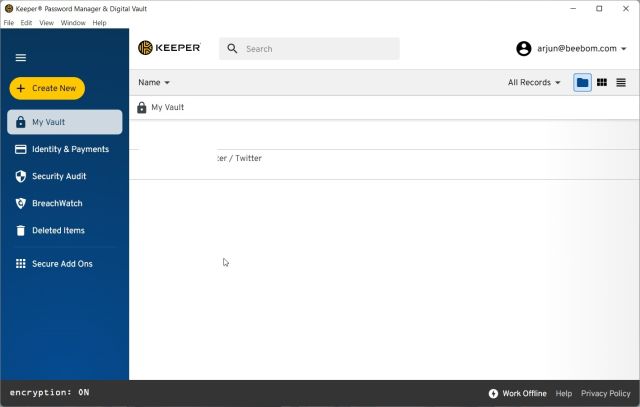
On top of that, Keeper encrypts your passwords using state-of-the-art AES 256-bit encryption and PBKDF2. Basically, you are getting the strongest possible encryption for password protection on your device. Additionally, Keeper supports 2FA with a variety of authentication methods, including hardware security keys, biometrics (Face ID, Touch ID, fingerprint), or Keeper’s DNA authentication system, which uses your Apple Watch or WearOS watch to authenticate your identity.
Windows users can also use Windows Hello for authentication, which is awesome. All in all, in terms of security, Keeper Password Manager is ranked among the best due to its strong commitment to security, privacy, and encryption.
Autofill Strong, Random Passwords
Let’s now discuss how easy Keeper makes it to autofill passwords and automatically store them in your private vault. Keeper offers a web extension for the most popular browsers, including Chrome, Firefox, Safari, Edge, Opera, Brave, and even the recently-deprecated Internet Explorer.
That Keeper extension lets you easily autofill passwords on all your sites with a click. The extension automatically offers a pop-up in login fields, and you can either select a saved password or generate a strong, random password right there. Not to mention, you can also add 2FA codes to a particular record so that you can instantly sign in without having to type the code manually. The experience is just seamless.
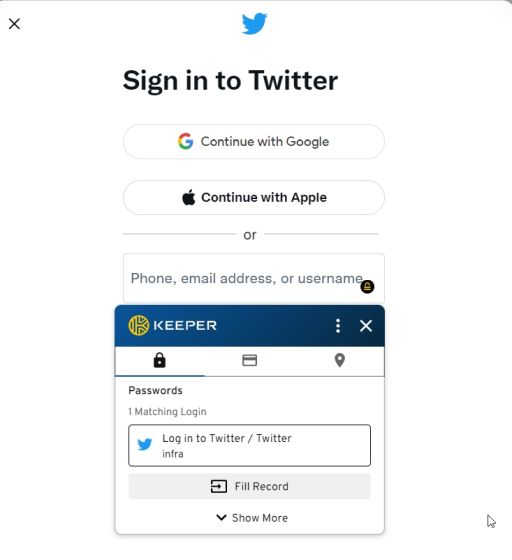
For auto-filling passwords in desktop apps, Keeper offers a full-fledged desktop program for Windows, macOS, and Linux PCs. Using Keeper’s desktop app, you can seamlessly enter your credentials on all of your dekstop programs and apps. While I found other password managers slow to authenticate in desktop apps, that is not the case with Keeper.
For smartphones, Keeper offers excellent app for both iPhone and Android devices. Not to mention, your passwords are synced across platforms in real-time, so you can quickly log in to an app or a website on any of your devices with an updated password. I found Keeper’s auto-filling and password generation features fluid and responsive.
Import and Export Passwords
The ability to import and export passwords without any restrictions is one of the best features of Keeper Password Manager. If you have been using another password manager and want to import all your passwords, Keeper makes the process easy and seamless. Using a CSV file, you can import passwords saved in your browser or from other password managers, like 1Password, Dashlane, KeePass, Bitwarden, RoboForm, and more.
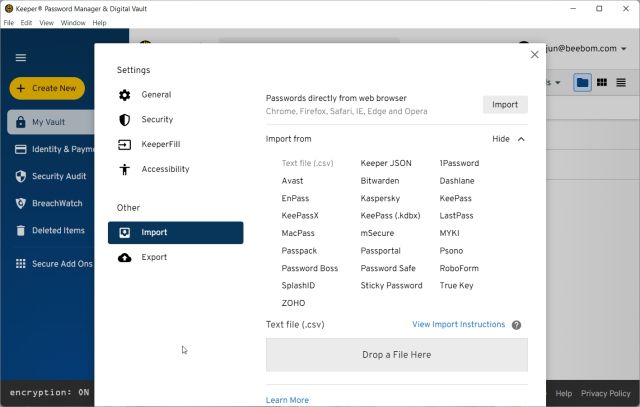
Need to export your passwords from Keeper? You have got three options – CSV, JSON, or PDF format. However, you will need to enter your master password to use Keeper’s export function. The reason I’m emphasizing interoperability is because you will not be locked into a particular password manager. You can always move your passwords in and out of Keeper, and that’s awesome.
Store Identity Documents, Payment Cards, and Other Information with Secure File Storage (Digital Vault)
Along with your passwords, you can also use Keeper to save and protect your personal information, your driver’s license and other identity documents, addresses, payment card information, passports, and more – all with the same zero-knowledge encryption and security as your passwords. Custom fields make it easy for you to organize all the data in your private Keeper vault.
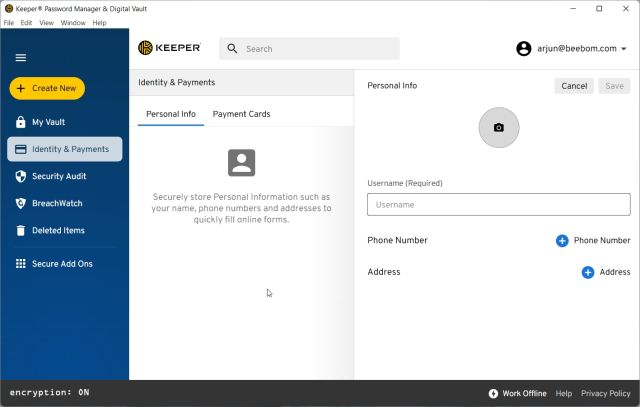
Keeper’s Secure File Storage feature is available as an add-on, and you get 10GB of space for $9.99 per year.
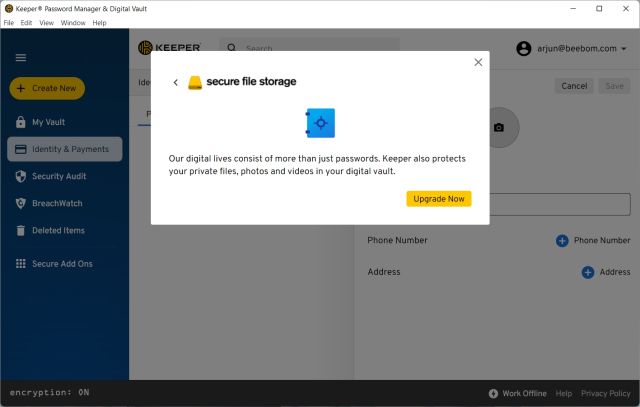
BreachWatch
Keeper also boasts a super useful feature called BreachWatch, which works similarly to Have I Been Pwned’s Notify service. BreachWatch monitors the dark web for data breaches and alerts you whenever your private credentials are found in public breaches. This feature will help you instantly change your password on the affected websites and protect you from data breaches, ransomware, and other cyber-attacks.
Again, this feature is available as an add-on to Keeper’s standard plan ($2.91/month). Alternatively, you can subscribe to Keeper’s monthly $4.87 Plus Bundle plan for $4.87/month, which includes both BreachWatch and Secure File Storage, in addition to Keeper’s password manager.

Family Sharing
Another one of the best features of Keeper Password Manager is that you can securely share passwords with your family, friends, and colleagues. Simply select the record, and you can share the credentials with just sharing, editing, or ownership permission. These granular permission levels are very useful, and sharing is seamless.
For households of two or more people, I highly recommend getting the family plan, which includes an unlimited password manager for up to five individuals in a household. Everyone on the account gets their own private vaults for storing passwords and sensitive documents, as well as the BreachWatch feature — all for $8.62 per month. I think it’s a steal of a deal.
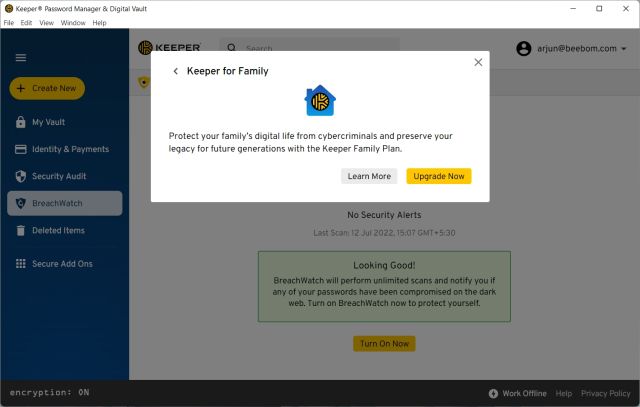
Account Recovery and Emergency Access
Because Keeper is a zero-knowledge security provider, it’s impossible for the company to recover your master password should you lose or forget it. However, as a handy solution to recover all your passwords without breaching zero-knowledge security, Keeper lets you set up your own custom security questions and answers. Unlike other solutions, Keeper has you define the questions and answers. This allows you to choose questions that only you know the answer to, which prevents everyone else from getting into your Keeper vault.
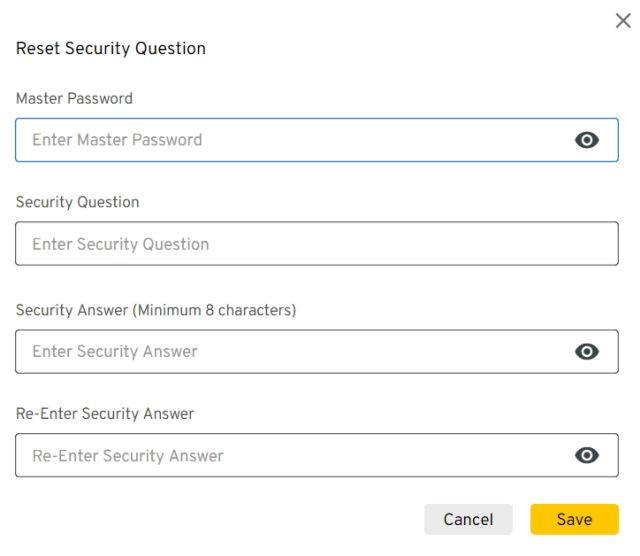
Keeper also has an Emergency Access feature feature that lets you select up to five people who can access your account in case you become incapacitated or pass away. You can invite up to 5 Keeper users to act as your emergency contacts, and you can define a waiting period after which ownership will be transferred to your emergency contacts.
As you can see, Keeper has developed a well-rounded product, accounting for both active usage and emergencies.
Offline Use
One lesser-known feature of Keeper Password Manager is that it works even when your computer is offline, which is a big plus in my book. This is possible because all encryption and decryption processes are done locally, on your device. I generally use a Chromebook, for which there is no desktop app. However, the Keeper web app can be used in offline mode to fill my passwords and decrypt them.
I can use the Keeper Password Manager not just on my Chromebook but also on my Windows, macOS, Linux, Android, and iOS devices.
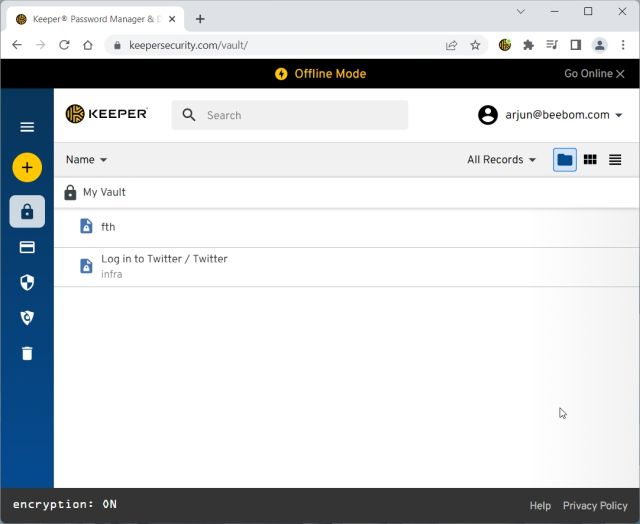
Privacy Policy
Keeper Security has a strict privacy policy and does not share your data with third-party vendors. It does collect some personally identifiable information such as your name, address, email address, age, and identification number. However, the company does not use this personal information for determining creditworthiness or for lending purposes.
Protect Your Passwords with Keeper Password Manager
This review discussed the best features of Keeper Password Manager. I like the fact that apart from being a robust password manager, it also offers secure file storage and password breach alerts, although those features cost a little bit more. The family plan is even more affordable, because it can be shared by up to five users. From security to premium features, Keeper Password Manager has it all and you are unlikely to find any missing features. So go ahead and check out Keeper Password Manager and select a suitable premium plan according to your needs.
Get the Keeper Password Manager (30% off on premium plans)






